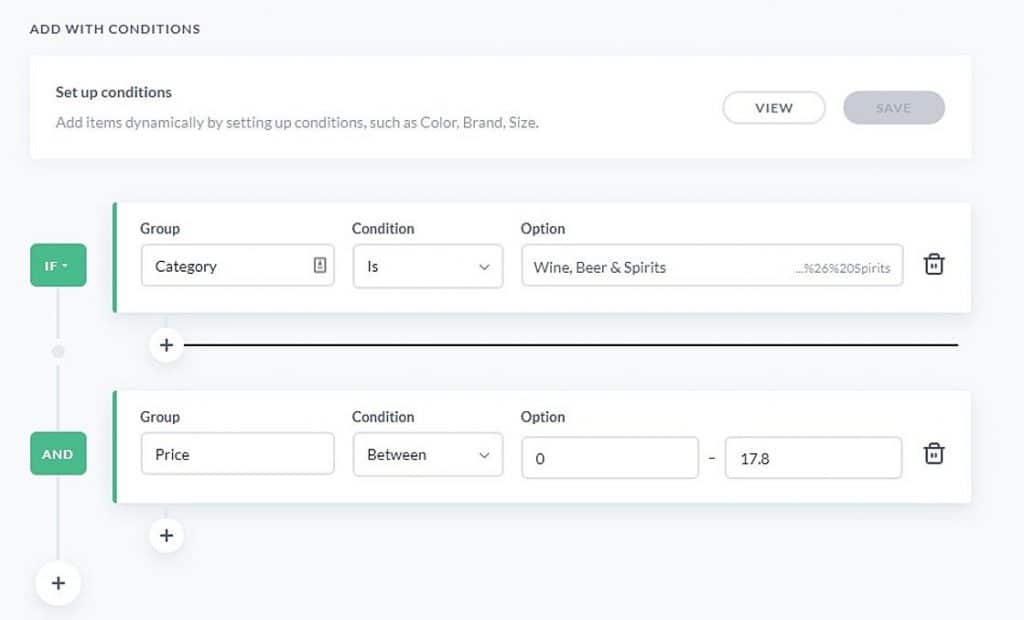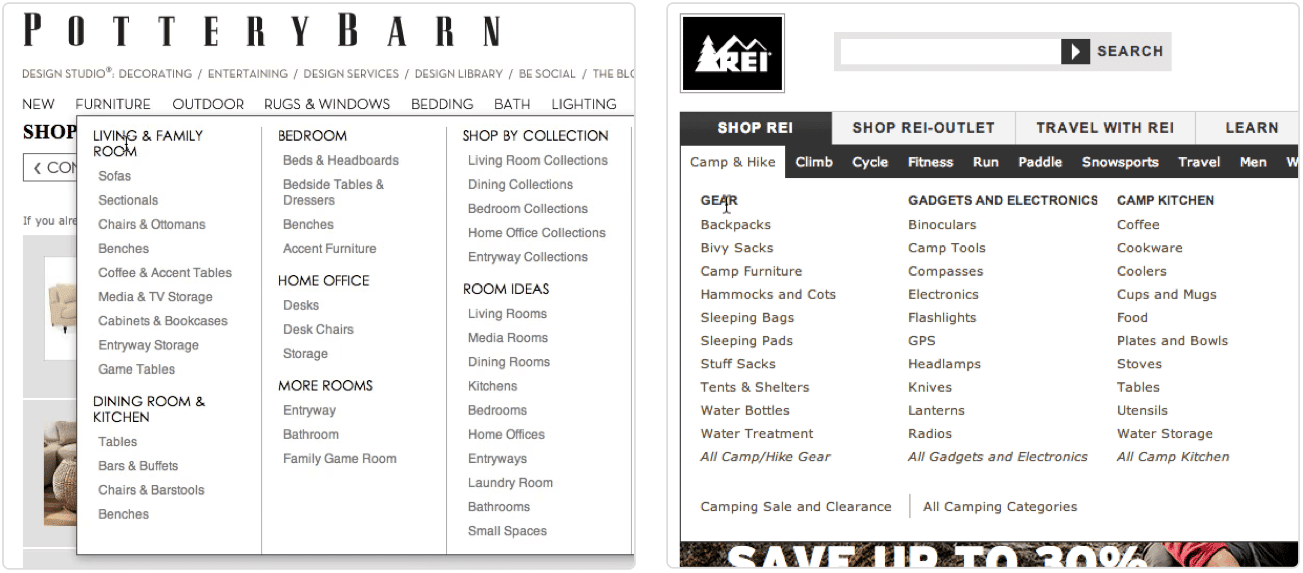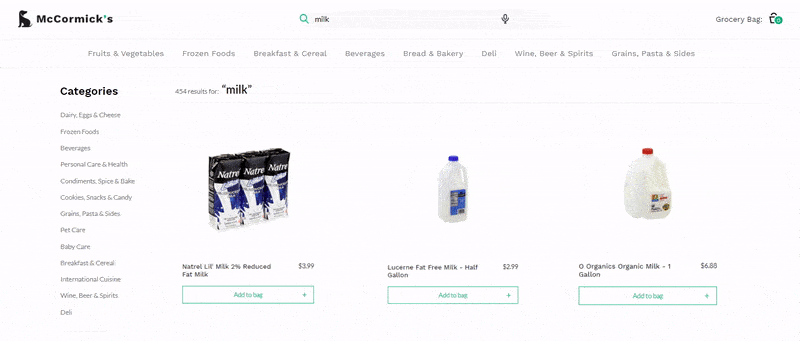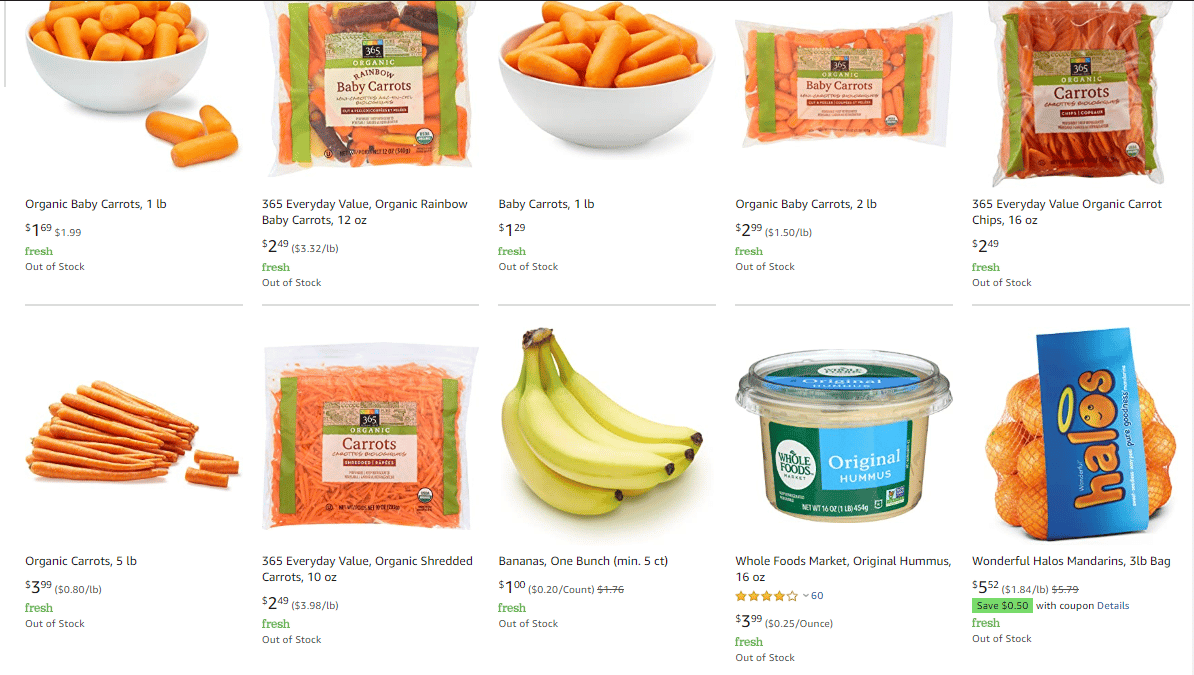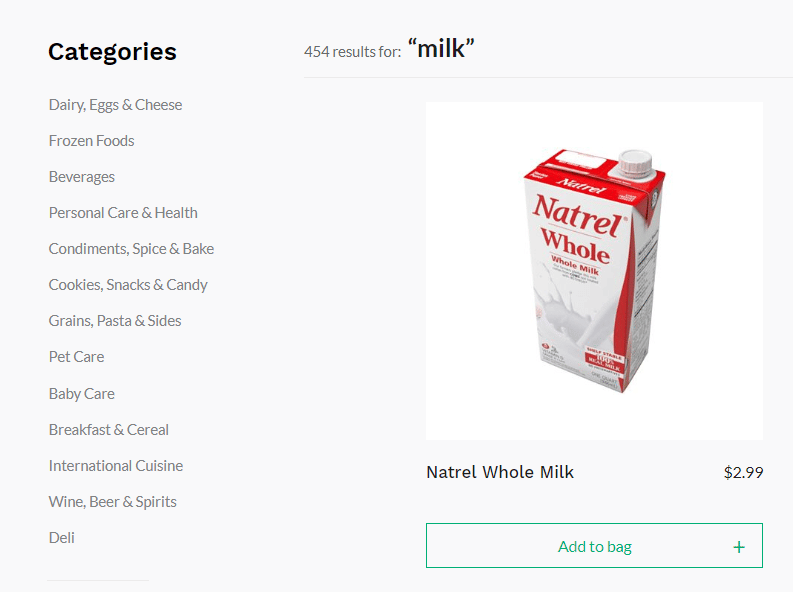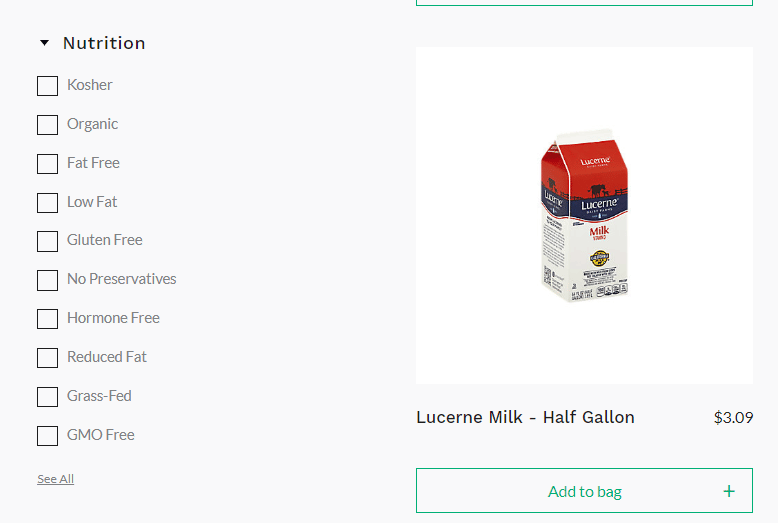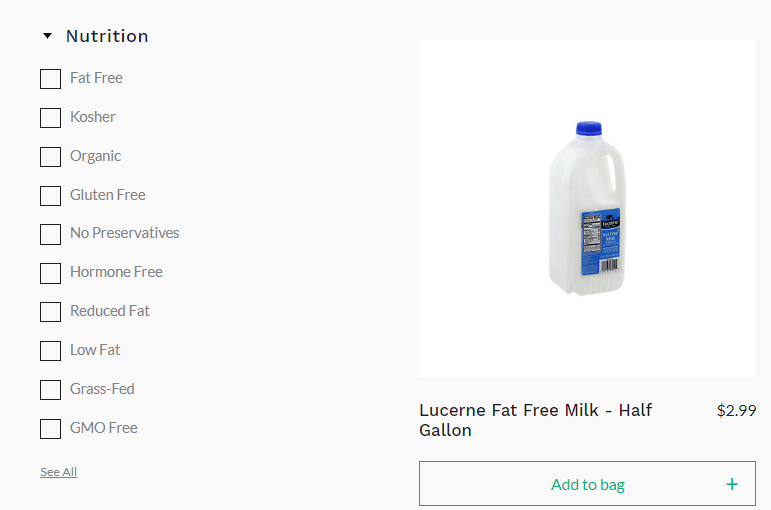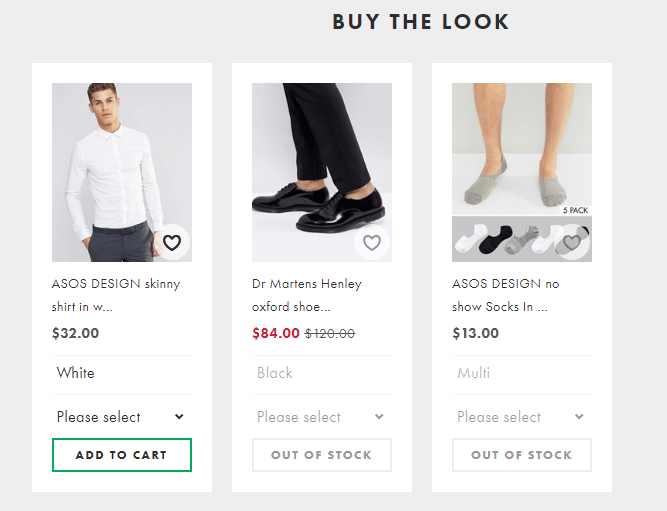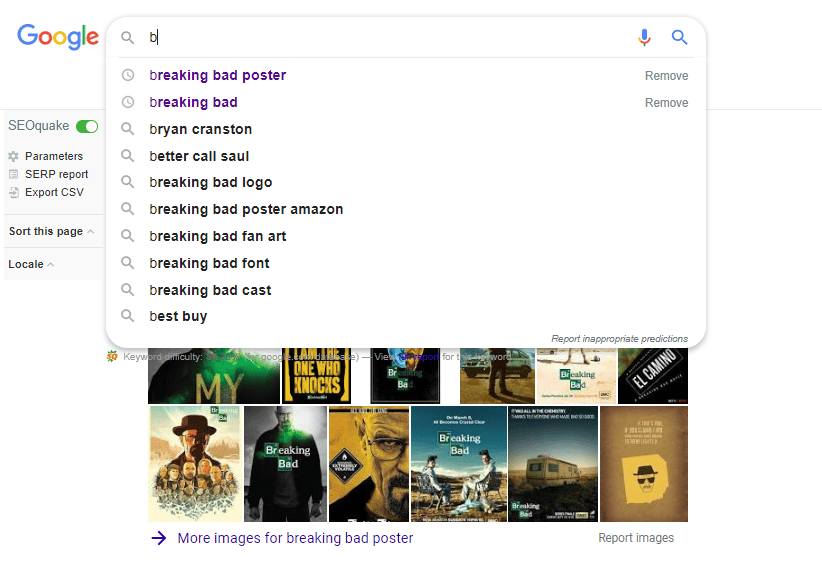E-commerce merchandising is changing.
While retailers in the early 2000’s were focused solely on bringing offline merchandising principles online, top e-commerce brands today are moving beyond traditional practices to create truly omnichannel user experiences. Retailers are analyzing data based on user actions, optimizing product rankings with machine learning, and personalizing their websites at the user level.
This article will highlight and explain the most important e-commerce merchandising strategies used today — from optimizing product pages to using data to personalize user experiences — so you can ensure your website is ready for the shift.
Table of Contents
- What is Ecommerce Merchandising?
- What Are Today’s Ecommerce Merchandising Trends?
- Deep personalization from AI and machine learning
- Focus on holistic customer experience
- Less manual and more strategic work through searchandising
- Adaptation to omnichannel needs
- Key Differences Between Merchandising Types
- Traditional merchandising
- Ecommerce merchandising
- Omnichannel merchandising
- 4 Must-Haves for a Successful Online Merchandising Strategy
- Optimized search and browse
- Navigation built for ecommerce
- Basic segmentation
- Detailed personalization for advanced merchandising
What is Ecommerce Merchandising?
Ecommerce merchandising is the practice of displaying products strategically on a website to increase findability, conversions, and revenue.
Great online merchandising isn’t only about displaying products enticingly — it’s also about optimizing your path to purchase no matter where users enter your website or where they are in that path.
The good news is that a better customer experience and lifts in key business metrics go hand in hand. When you make it easier for customers to find the products they’re looking for, the more likely they are to purchase those products from you.
Every strategy we discuss here will be centered around those goals.
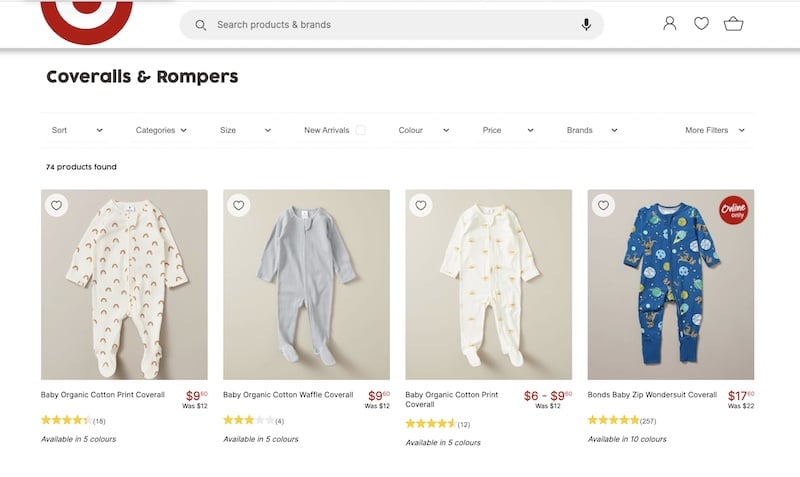
What Are Today’s Ecommerce Merchandising Trends?
While ecommerce was once just a new spin on traditional retail, the reality is that omnichannel has completely changed the game for merchandising.
Simply bringing in-store merchandising online doesn’t cut it anymore: customers expect more from both, and the lines are blurred between the two. Today, shoppers expect convenience, personalized experiences, and instant gratification—no matter where they are.
As ecommerce merchandising evolves into omnichannel, there are several trends and pivots in strategy that are evolving along with it:
Deep personalization from AI and machine learning
Applying insights to customer behavioral data, retailers are now able to personalize and optimize shopping experiences like never before. Every click on your ecommerce site is a vote for a product’s attractiveness, and every search query is an opportunity for learning how users actually behave on your site and what they’re looking for.
Focus on holistic customer experience
A poor site experience translates into lost revenue. With high expectations for site performance and ease of use, shoppers will leave a site if they can’t easily and quickly find the products they’re looking for.
“As an online merchandiser develops their site, they must constantly keep the customer in mind for ease of use and functionality,” explains customer experience expert Shep Hyken. “You can spend a lot of time and money working on the selling, copywriting, and marketing, but when the customer finally gets to the site, the experience must be easy, convenient and frictionless—or all will be for nothing.”
Less manual and more strategic work through searchandising
Manual merchandising work becomes very tedious and time-consuming when product catalogs grow into the thousands of products. It’s here where AI-based searchandising—the strategic placement of items within search queries with the goal of optimizing for a business metric—can be helpful.
Rather than merchants needing to manually adjust search results to boost products that offer a higher profit margin or bury products that are less attractive to customers, a product discovery platform can optimize results automatically based on a number of inputs such as clickstream data, product attribute, or inventory. And with the focus on holistic customer experience, those rules can apply both to search results and browsing pages to provide a consistent shopping experience.
The result? Ecommerce teams have the time to proactively create new strategies to drive KPIs and improve customer experience.
Adaptation to omnichannel needs
Even as life returns to normal post-pandemic, shopper expectations have shifted. Customers want to know the products they need in-store are in stock before they venture out in person. They want different options for fulfillment, such as Buy Online, Pickup in Store (BOPIS), and different options for returns, such as BORIS.
Successful ecommerce merchandising today takes these omnichannel needs into account, providing ways to remove friction not just from the digital shopping experience but from the experience in all contexts and formats.
Key Differences Between Merchandising Types
We’ve identified seven key places where both traditional and ecommerce practices are evolving into a more holistic omnichannel strategy for merchandising and customer experience:
- Product display
- Product discovery
- Product information
- Personalization
- Recommendations
- Inventory Management
- Fulfillment and Returns
Traditional Merchandising
Traditional retail relies on the physical immediacy and sensory gratification of the in-store experience:
- In most retail spaces, everything from lighting, paint, color, music, and smells to product positioning and signage creates a unique customer experience.
- Visual merchandisers carefully choreograph the shopper’s journey, prominently displaying best-selling items at the front of the store and positioning products together to maximize conversion and upsell opportunities.
- Assuming desired products are in stock, fulfillment is immediate and in-person.
Personalization in retail stores typically comes in the form of the sales associates themselves. While their ability to provide a fully personalized experience is limited (as we’ll see in a bit), the store associates have the distinction of acting not only as sales person but also as product expert, trusted advisor and recommender, experience curator, inventory manager, and fulfillment specialist for each customer.
Unsurprisingly, the challenges in traditional retail center around the store associate’s ability to deliver on all of these needs—especially in the context of rising customer expectations.
Ecommerce Merchandising
Classic ecommerce merchandising is a series of tradeoffs against in-store retail. Where customers get the convenience of shopping from home, many ecommerce experiences sacrifice personalization and immediacy in order to deliver that convenience. Ecommerce introduces a number of benefits and challenges compared to a physical store experience:
- Instead of physical senses, brands use website UX and UI like imagery, color, copy, video, unique website layouts, and more to give users something to connect with.
- Online shoppers looking for additional information can find important features and attributes directly within each product description
- Product discovery happens through browsing, search, and recommendations. Search engines offer keyword matching, but traditional models of keyword relevance and traditional recommendation pods don’t necessarily surface the best results for each user.
- Fulfillment involves shipping directly to home, and inventory management requires manual workarounds by merchandising teams to remove out-of-stock items from the website.
In traditional ecommerce, personalization of the customer experience is difficult. Ecommerce customers can indicate their preferences on the website and create an account to be “remembered” for later, but those preferences have to be physically entered and saved.
More often than not, ecommerce merchandising provides a “one size fits all” experience. When in-person retail relies on the store associate to provide personalization and when the ecommerce experience is almost always self-serve, there just isn’t as much opportunity to provide unique experiences tailored to each user.
It’s here where omnichannel merchandising offers amazing potential.
Omnichannel Merchandising
In a world where 82% of smartphone users consult their devices in-store as they’re making purchasing decisions, omnichannel merchandising focuses on optimizing the customer experience across shopping contexts. Using AI and machine learning technologies, omnichannel solutions can be additive, improving some of the sticking points of both traditional and ecommerce merchandising to prioritize customer experience and drive revenue:
- Instead of traditional browsing through an entire store’s inventory, omnichannel merchandising allows customers to be shown and recommended highly attractive products throughout the site, personalized for variation, fulfillment, or stock preferences.
- Machine learning and AI enable a highly personalized, holistic shopping experience across multiple touchpoints.
- New AI-enabled technologies like product quizzes and virtual try-ons can enhance even the most detailed product descriptions online, reducing return rates and creating more possibilities for digitally enhanced in-store shopping experiences.
- AI and machine learning can rerank online search results and recommendations to bury out-of-stock items and provide real-time visibility into in-store stock. This opens up additional avenues for innovative fulfillment options like BOPIS and dynamic order routing.
Applying AI to ecommerce merchandising: if a user tends to buy organic milk over regular milk, organic milk should appear first.
4 Must-Haves for a Successful Online Merchandising Strategy
Optimized Search and Browse
To sell more products, you must ensure users can find the products they’re looking for — fast. It’s easy to view internal site search and merchandising as two separate entities, but in modern ecommerce, that’s no longer accurate.
Whether you’ve invested in search, merchandising, or both, the time has come to shift away from looking at both of these necessary systems as free-standing silos. Instead, work toward integrating them into a seamless, omnichannel process that continuously learns from your buyers—a system that is worthy of continual investment and improvement.
Here are some ways you can optimize on-site search for sales:
Invest in modern autocomplete
Research shows that autocomplete can boost conversions by up to 24%.
Good autocomplete, however, does more than estimate basic user queries. E-commerce giants are dialing in their merchandising practices by combining Natural Language Processing (NLP) algorithms with autocomplete to present query results that approximate user intent. These algorithms are commonly used to:
- Correct errors like phonetic misspellings, keyboard proximity typos, punctuation nuances, and omitted character typos. Is it “blue ray”, “blue-ray” or “bluray?” It’s officially spelled “blu-ray”, but you shouldn’t require users to know this to get good results.
- Detect synonyms to serve relevant results to users. If a user is searching for “suntan lotion,” good autocomplete will recommend “sunscreen.”
- Identify word importance to better understand what results will most likely lead to a conversion.
- Add support for multiple languages to give the best search experience to any visitor.
Embed product listings in the search bar
Embedded product listings work great for encouraging clicks through search because they provide visual confirmation that the shopper has found the product they’re looking for.
But that’s not all: our own data tells us users are twice as likely to convert on products they’ve clicked from embedded product listings.
Automate search results re-ranking
Great search systems automatically re-rank search results for products most likely to lead to a conversion.
A basic example of results re-ranking is as follows:
If 40% of users who search for “laptops” purchase one model and 22% purchase another model, it would make sense to re-rank the first laptop higher (perhaps in one of the first few positions) and the second laptop closely following. Other laptops that users don’t frequently purchase should be moved down in the search results.
Great re-ranking systems, however, don’t only re-rank exact-match product results. They also re-rank attractive products that users are likely to purchase.
Take a look at these results for “baby carrots” on Amazon for example:
Although “hummus” was not part of the search query, Amazon knows their users frequently purchase hummus along with baby carrots, so they’ve included it in the results. But that’s not all.
Amazon found it profitable to rank “hummus” for the “baby carrots” query not only because their users tend to buy hummus with baby carrots, but also because when users see the hummus, they can better picture themselves eating baby carrots with a tasty condiment — thus making the baby carrots more attractive.
Enable personalization
The most recent research shows that 80% of consumers are more likely to buy from a company that offers a personalized experience.
Personalization should affect every facet of your ecommerce merchandising search strategy—from your autosuggest results to the products you rank for any search query. As in the milk example above, if a user tends to buy organic milk over regular milk, organic milk should appear first for that user.
Great personalization is more than simple segmentation covering demographic data like gender or age. It’s about learning your individual customers’ preferences based on their historical data and previous interactions with your site. With every search, click, bounce, add-to-cart, and purchase, your users are telling you what products they prefer to buy. It’s your job to show them more of those products.
Navigation Built for Ecommerce
Poor navigation has the same negative effects as poor search.
When users can’t find the products they’re looking for, they assume they aren’t sold on the site and leave (many never to return). Especially on mobile devices, poor navigation can pose a huge problem.
In a mobile e-commerce usability study conducted by Baymard, 50 of the world’s top e-commerce sites were scored based on their navigational usability. The results were less than favorable:
Over 50% of the sites studied were ranked poorly (in the orange or red in the graph above) for mobile navigation, showing that even the top companies still have a way to go to ensure that their customers can find their products through traditional browsing methods.
Following these navigation guidelines will ensure your site isn’t in the red:
Use filters and faceted search
Faceted search is essential for increasing conversions on broad queries like “women’s dresses” or “laptops” and for products with multiple features.
They allow search results to be broken down and filtered into subcategories to make finding the right product faster and easier than browsing through thousands of results.
Understand what product features your users care about most — whether it’s color, size, brand, or something else — and display them on the page such that users don’t have to work to find them. Facets should be dynamic, meaning that they should vary based on the context of the search query. For instance, if a user is searching for “blazer,” you may decide to display facets like “fit” and “jacket style” higher in the navigation. If they’re searching for “pants,” facets like “inseam” and “front style” would be ranked higher.
But there’s more to faceted search than filters.
E-commerce stores can now combine personalization with faceted search to provide even faster navigation experiences to users. Take this grocery website as an example:
For a search query like “milk”, you may decide to include a “Nutrition” facet with filters like “fat free,” “kosher,” and “gluten free” in your navigation.
This works fine for new users, but what if you know one of your users likes organic milk? Most sites would simply show the user the same filters in the same order. But with personalization, these filters (and other related filters, like “kosher”) can be re-ranked to make it easy for the user to select what they care about:
Incorporate trending, past viewed, and recommended products
Some users come to your site open-minded. Some may be looking for a specific, in-season product, and some may be looking for a product they purchased before.
For users with an open mind (and also for users trying to find one thing), you can include trending products on your home page like Sephora:
…or, you can recommend complementary items to users who have viewed or purchased similar items.
To take it further, you can use your customers’ wish list data (or even better, their clickstream data) to personalize these recommendations.
Retargeting can also be used to redirect users to product pages they’re most interested in viewing. Someone who typically shops for women’s clothes at an online retailer can be automatically redirected to the women’s category page or a collection of women’s clothing when she visits the home page.
While targeted redirects can be powerful, taking them further with personalized categories and products on that redirected page can give them an unrivaled site experience.
Implement easy-to-read menus
If your product categories are limited, you may choose to use a simplified menu with broad categories of products (like refrigerators, dishwashers, ranges, and ovens).
But if you have many categories, you may choose to use categorized mega menus:
There are some challenges that come with larger menus, such as parent/child categories and how different users interact with them.
For instance, if you’re a user on Best Buy looking to purchase sound bars for a home theater system, how would you find them on a mega menu? Would you look under the “Audio” category, or would you look under “TV” or “Home theater”?
It’s different for every user.
Ecommerce merchandising best practice, then, is to include the same subcategories under different but related parent categories. In the previous example, Best Buy lists sound bars under both.
Basic Segmentation
Throughout this article, we’ve briefly discussed different ways you can use customer data to streamline site merchandising. While simple demographic segmentation can’t be classified as “personalization,” there are some basic data points you can use to optimize user experiences:
Demographics
What types of products do users of different ages or genders tend to purchase? You can use this information to customize the trending products you show on your home page, the categories you recommend, the products in those categories, and more.
Geography
Do users in different parts of the world purchase different types of products? Do they purchase different types of products at different times in the year? Can you recommend products with smaller shipping costs based on the locations of your users?
History
Are your users first-time visitors or returning shoppers? For first time visitors, you may decide to show trending products or categories prominently on the home page to capture their attention. If they’re returning, you can show products they’ve recently viewed or recommend products based on their viewing habits.
Transactional Data
If you know what payment methods a customer uses and what address they typically send items to, the checkout process can be simplified by autofilling this data for the customer. If a user typically purchases multiple quantities of an item, auto filling that quantity can also speed up the add-to-cart process.
Devices
Do users on different devices tend to purchase different types of products?
Detailed Personalization for Advanced Merchandising
While segmentation only requires basic, easily trackable data, true personalization like the kind used in omnichannel merchandising uses much more detailed data on how users interact with your site to serve next-level user experiences. Personalization is harder to get right, but the payoffs in terms of conversions and revenue are worth it.
Search habits
What types of products do your users usually search for, and how do they search for them? How can you customize your user’s search experience from those habits?
Google does an amazing job at customizing search (and more importantly, autocomplete) based on past searches. For instance, if I search for “breaking bad poster” in Google, complete the search, then type “b” into the search bar, all the results shown are related to “Breaking Bad:”
You can also use your user’s search habits to personalize the products that appear for specific queries. For instance, if your users tend to search for “organic” products, you can weight your search algorithms to boost organic products for every search query.
Conversion habits
Search habits are a great indicator of products users want to see more of, but the products they add to cart and purchase are a much better indicator. These actions should have a greater effect on the weighting of your personalization algorithms.
Global user habits
Using what you know about your general user population’s actions, you can quickly personalize every user’s experience from the get-go.
For instance, if you know a majority of your users like to buy “red wine” after adding “red meat” to their cart, you can rank red wines higher in the search results for “wine” after users add “red meat” to their carts.
Ignored products
In the same way you can personalize product recommendations and search results based on what users search and add-to-cart, you can also decrease the likelihood users see products they typically ignore after a search.
For instance, if you know a user doesn’t typically purchase cereal from “X Cereal Brand,” you can rank cereal products from that brand lower when the user searches for “cereal.”
Omnichannel data
If you have a customer loyalty program that tracks behavior across in-store and online shopping, the data on each of your users can be combined with any of the above recommendations to serve hyper-personalized experiences to each user.
While each individual personalization tactic will work to serve better user experiences to your visitors, the best personalization systems use data from every interaction a user takes on a website and apply it across the website as a whole.
Is your ecommerce merchandising strategy future-proof?
Need help optimizing your omnichannel merchandising strategy to drive critical business KPIs? Krestor’s AI-backed product search and discovery platform will help personalize your customer experience and generate lifts in the metrics that matter most.
Get an inside look at how our merchandiser tools help drive results without extra work:
Even Ecommerce Superheroes Need A Sidekick
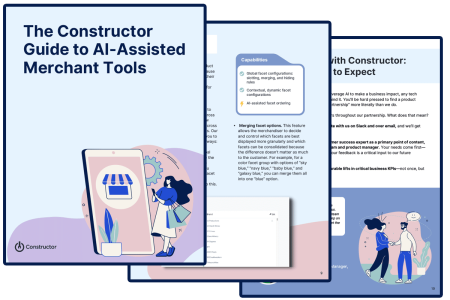
Ecommerce merchandisers are the champions of retail: managing a busy workload, creating personalized site experiences for customers, and driving on-site revenue. It’s a lot to balance.
But you can reduce your routine work and drive your KPIs with Krestor’s AI-assisted merchant tools helping you.
In this guide, we’ll dive into two areas where Krestor streamlines workstreams for your merchant teams:
- Site search and browse capabilities
- Sitewide product discovery

